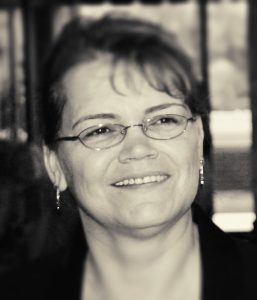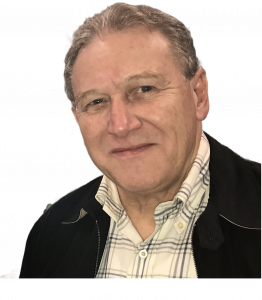About Us
The Lowndes County Historical Society & Museum, founded in 1967, is dedicated to preserving and sharing the rich history of Valdosta and Lowndes County. Located in the heart of downtown Valdosta, our museum features permanent and rotating exhibits highlighting local people, industries and culture, telling the story of our community. Our archives and library are open to researchers and genealogists for on-site study, and we offer research assistance. We welcome school groups and community visitors for guided and self-guided tours. Our mission is to promote interest in local history, encourage research, and provide educational resources to the public.

Our Mission
The Lowndes County Historical Society was chartered in 1967 in a grassroots effort to preserve and disseminate local history. The Society immediately began collecting material pertinent to the history of Lowndes County and the surrounding region. Maintaining a museum and making collections available to the public for research and education was one of the earliest goals of the Society continues over 50 years later.
The following objectives are from the Lowndes County Historical Society Bylaws:
- Promote an interest in local history.
- Collect and preserve documents, pictures, and artifacts pertinent to our cultural heritage.
- Maintain a museum for the preservation and display of cultural objects mentioned above.
- Promote and encourage historical research and study of our city, county, and surrounding areas.
Our History
The Lowndes County Historical Society is a non-profit organization dedicated to protecting and preserving the rich history of Valdosta and Lowndes County, Georgia. The Lowndes County Historical Society was founded in 1967, originally establishing a small museum in a historic home on Patterson Street in Valdosta, Georgia. The Society’s founders were a group of residents who shared the goal of preserving the history of Valdosta and Lowndes County. The organization aims to promote an interest in local history, collect and preserve documents, pictures, and artifacts pertinent to our cultural heritage, and encourage historical research and study of our community.
Museum
The Society and Museum found a home in 1977 in downtown Valdosta in the historic former Carnegie Library at 305 West Central Avenue. The library building was built in 1913 by local architect Lloyd Greer and the structure was placed on the National Register of Historic Places in 1984. The museum provides almost 10,000 square feet of local history displays and research material. Over 6,000 individuals, including 2,000 school children, visit the museum annually. With meeting and guest speaker facilities on site, the museum hosts a wide array of gatherings, presentations, and activities. The 26 museum archives contain many documents, photographs, and artifacts about Lowndes County residents, businesses, societies, and organizations that are invaluable to researchers. In addition to the exhibits, the museum also houses an extensive archive, including the Hugh Vallotton Genealogical Library. Beginning in 2020, the museum was extensively repaired and renovated. The museum has two floors of gallery space; the upstairs gallery contains many photographs, artifacts, and information on local events and offers displays rotated regularly. Featured downstairs is an interpretive exhibit: Lowndes County: Past, Present, and Future which takes you through the local community’s development from a small frontier town to a thriving and diverse city. Industry, business, military, agriculture, transportation, and local history are all covered in this detailed display.
Outdoor Exhibit
The outdoor exhibit area behind the Carnegie Library/Museum was begun in 2004. This space includes a caboose, a belfry with a historic school bell, cane grinding items, a log transport cart, a pioneer cabin, and original ecosystem and historical garden plants.
Bird Annex
Because of the generosity of people around the world, the museum has grown beyond its capacity. Across the street from the museum was the perfect solution to the ever-growing museum, the Bird Hospital building. The Hospital was built in 1927 on the site of Drs. John and Joe Burton’s home. The land was sold to Drs. Mixson and Bird in 1926. In August of 1927, the state-of-the-art Hospital was opened. Less than 20 years later, the Hospital was sold to the Health Department. First Baptist Church bought the building in 1968. Recognizing the potential of over 11,000 square feet spread over 2 stories, the Lowndes County Historical Society purchased the old Bird Hospital building in 2015. The Trustees appointed architect Glenn Gregory to oversee the building’s extensive renovation. The project was begun in November 2017 and completed in September 2019 at a cost of about $1 million. The slow process of planning and implementing the future Museum Annex has begun.
Our Team
Executive Director - Renate Milner
 Renate Milner was born in Germany and moved to the United States in 1991 with her husband, an Air Force pilot whom she met while he was stationed at Spangdahlem Air Base. She pursued her passion for history, after completing her studies at Georgia Military College, earning a master’s degree from Valdosta State University in 2000.
Renate Milner was born in Germany and moved to the United States in 1991 with her husband, an Air Force pilot whom she met while he was stationed at Spangdahlem Air Base. She pursued her passion for history, after completing her studies at Georgia Military College, earning a master’s degree from Valdosta State University in 2000.
Her career in public history began at the Lowndes County Historical Society, where she started as an intern. During this time, she discovered that Moody Air Force Base had housed German POWs during World War II, leading her to conduct groundbreaking research on German prisoners of war in Georgia—pioneering original scholarship on the subject. She later became director of the historical society, a role she held until her appointment as State Archivist of Georgia in 2007.
From 2012 to 2024, she built a successful career as a medical billing and revenue cycle consultant, and continues to provide consulting services on a part-time basis. In 2024, she returned to the Lowndes County Historical Society as director, bringing both her leadership experience and passion for history back to the institution. With a deep appreciation for historical research and community engagement, she finds her role as a museum director both fulfilling and essential.
Historian/Researcher - Harry Evans
 Harry, a baby boomer, was born in 1951 at the Little, Griffin hospital in Valdosta, GA, delivered by Dr. Joyce Mixon, Jr, one of three Mixons from his family, including his father and brother, Harry, who served as physicians in the city. The hospital ceased to exist, as such, four years after the big event. In 1955, all of Little, Griffin’s patients were transferred to the new Pineview General Hospital that later became South Georgia Medical Center.
Harry, a baby boomer, was born in 1951 at the Little, Griffin hospital in Valdosta, GA, delivered by Dr. Joyce Mixon, Jr, one of three Mixons from his family, including his father and brother, Harry, who served as physicians in the city. The hospital ceased to exist, as such, four years after the big event. In 1955, all of Little, Griffin’s patients were transferred to the new Pineview General Hospital that later became South Georgia Medical Center.
Harry rarely wandered far from the place of his origin there at 1306 N. Patterson. He grew up about six blocks away on West College St and attended kindergarten at Miss Emma’s about four blocks away on N. Oak St. across from Valdosta State College, which had been renamed from Georgia State Womans College the year before Harry was born, subsequently becoming coeducational. Both of Harry’s parents retired as members of the staff after the school became Valdosta State University in 1993.
Harry had to venture all the way out to the corner of N. Patterson and Woodrow Wilson Drive to attend four years at the original Sallas Mahone Elementary School, built in 1950 and demolished in 2003. The Sallas Mahone moniker, honoring two early Valdosta teachers, is carried on at a new school on Lake Laurie Drive. As the 1960s rock n rolled in Harry was sent packing to the Central Elementary School for his fifth-grade studies. The school was built in 1905 as the first purpose-built Valdosta High School. Before that the Valdosta Institute, formerly a private school since the 1860s, served as the high school from 1892. When the high school at 1300 Williams St. was opened in 1922, the Central Ave. building became the elementary school. It served as the junior high for a time, and from 1969 until 1973 it was the first home of the private Valwood School before succumbing to the wrecking ball in 1974. The site is now the southwest corner of the First Baptist Church main campus.
Next on Harry’s educational journey was four years at Valdosta Junior High across Burton St. from McKey Park. The park was named for Wilburn McKey, former mayor of Valdosta (1926-1930), who donated the land to the city. The site of the school is now the home of Valdosta Middle school.
After the ninth grade Harry moved on to Valdosta High School on Williams St. in 1966, one block east of the demolished Little, Griffin Hospital where then stood an A&P grocery store (1957) which later became the VSU bookstore. In between was the Brookwood Plaza shopping center built ca 1965, which later became the VSU University Center in 1994. VHS was a magical school for many reasons, but most famously for having the winningest football team in the nation and twenty-four state championships, two of which were won during Harry’s three years there. Notably Harry played no part in any football victory or the band being honored as the greatest band in Dixie. He still says “We” won.
Back over to the old Little, Griffin site, just north past Drexel Park and the Mile Branch was the main campus of Valdosta State College. Harry spent four years there and another just because he was having such a good time. He was a founding member and officer of the Kappa Alpha Order chapter. He earned a BA degree in History. Later he would return for night classes to finish up a Masters Degree in Business Administration.
Volunteers
- Donald Davis
- Elke Milner
Past Presidents
Dr. William Gabard (1967-1968)
Tom Shelton (1968-1970)
Vera D. Hagen (1971-1972)
Albert S. Pendleton, Jr. (1972-1973)
Joseph G. Stevens (1973-1974)
Dr. Joseph A. Durrenberger (1974-1975)
J. Edward Willis (1975-1976)
Natalie Sirmans Williams (1976-1979)
Mitchell J. “Mike” Paine (1979-1981)
Mary Young Smotherman Manning (1981-1983)
Lilla Kate Parramore Hart (1983-1985)
Dr. Joseph Tomberlin (1985-1987)
Dale H. Peeples (1987-1989)
Dr. John E. Lancaster (1989-1991)
Louie Peeples White (1991-1999)
Ed Willis (1999-2003)
Julie Smith (2003-2007)
Patsy Giles (2007-2020)
Sally S. Kurrie (2020-2021)
John R. Bennett (2022-2023)
Ron Irwin (Acting President - 2024)
Dr. Michael Black (2025 - present)
